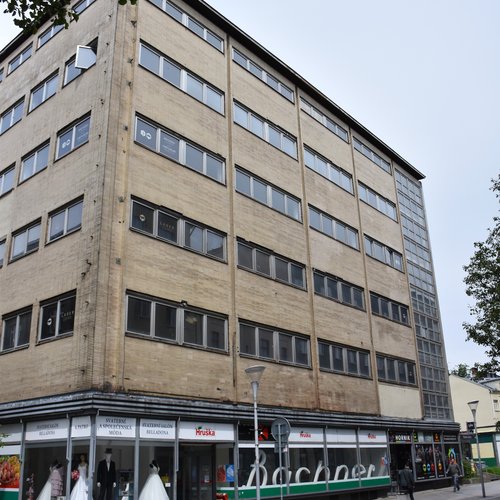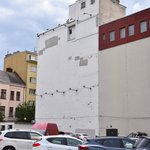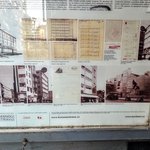The Bachner company was successful and needed to build a larger department stores'. The son Erich Bachner of the investor Moritz Bachner met the architect Erich Mendelsohn during a winter sports holiday in Switzerland. Whether he visited Ostrava is not documented. As Mendelsohn already had a lot of experience with public buildings and department stores, he was certainly a trustworthy partner. Construction began on 18 August 1932 and ended just one year later on 5 October 1933. It sold everything from food to household items, fashion and textiles.
As Erich Mendelsohn had already fled from Germany in 1933 when the Nazis seized power, he was no longer able to follow the construction of the department stores'.
With the occupation of Czechoslovakia by Germany on 14 March 1939, most members of the Bachner family fled. The house was subsequently aryanised and served as a branch of the Czech department stores' chain Brouk a Babka.In 1944, only the windows were destroyed by air raids. In contrast, the RIX department stores' not too far away was hit and later demolished. After the end of World War II, Erich Bachner got the building back. However, he was expropriated again, but this time by the communist rulers in 1948. Shortly afterwards, the store's name was changed to Horník, which means miner in Czech and was intended to emphasise one of the city's industrial pillars.
Already in 1984 the house was declared national heritage.
In the 1990s, the building was still used as a department store. In the following years. the individual floors were subsequently used for different purposes. As the activities within the city centre of Ostrava have now shifted to other areas, both the Bachner department stores' and this part of the city centre are uninteresting and less frequented by the majority of people.









